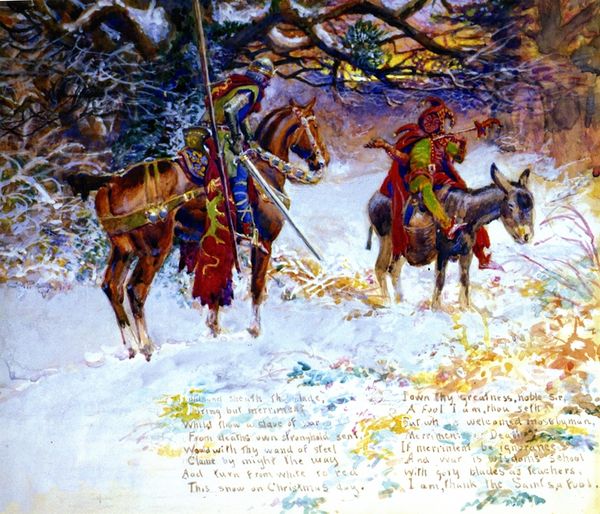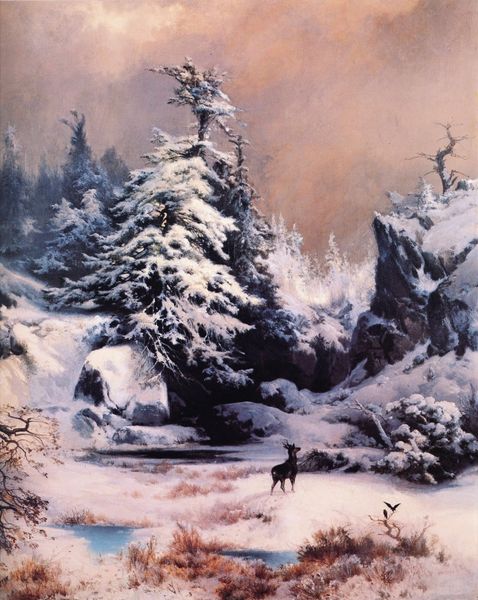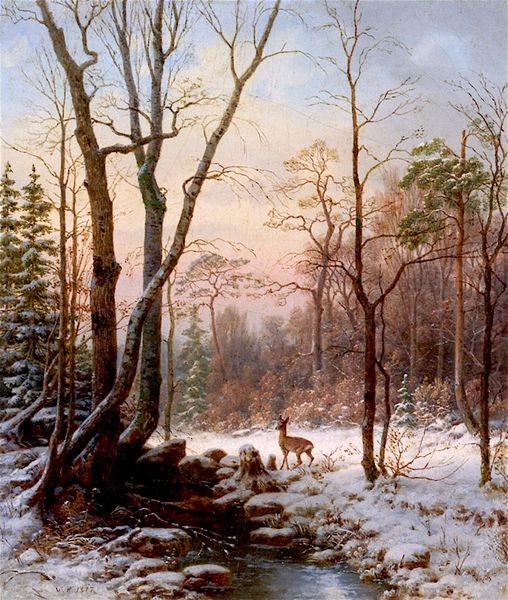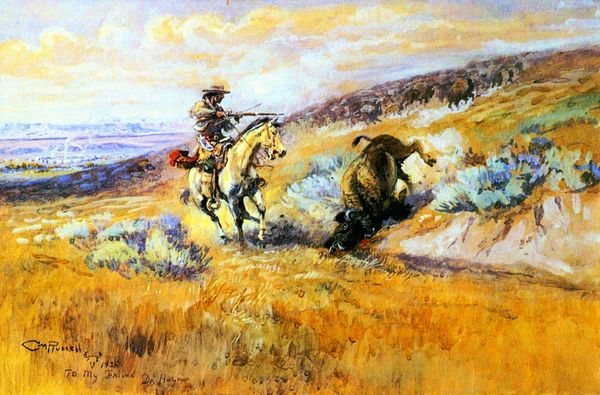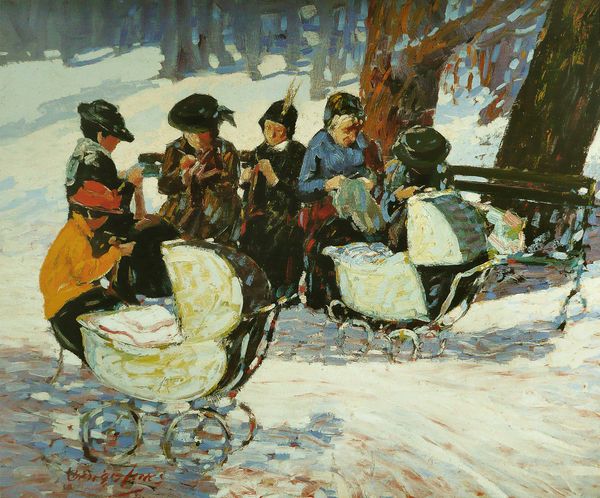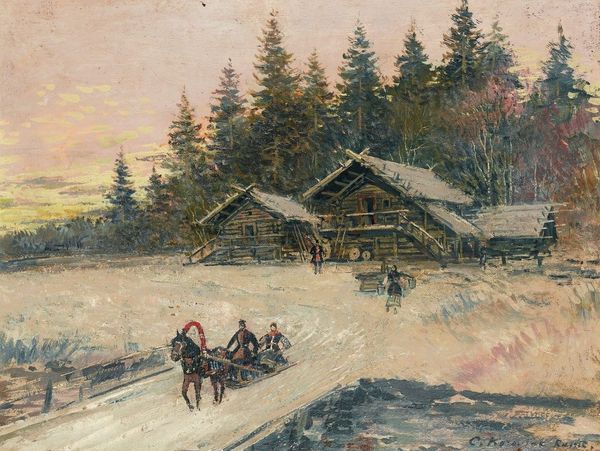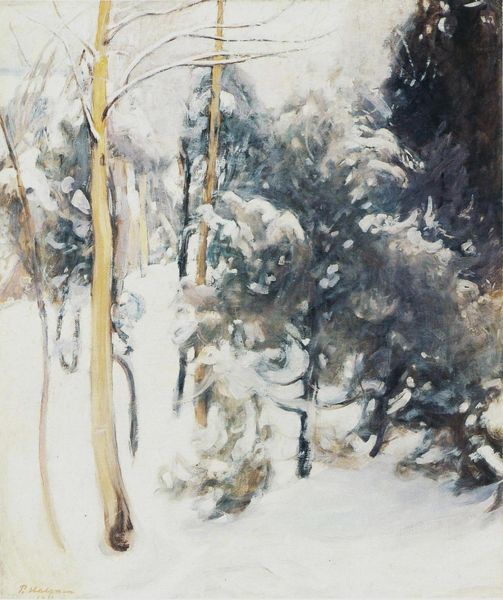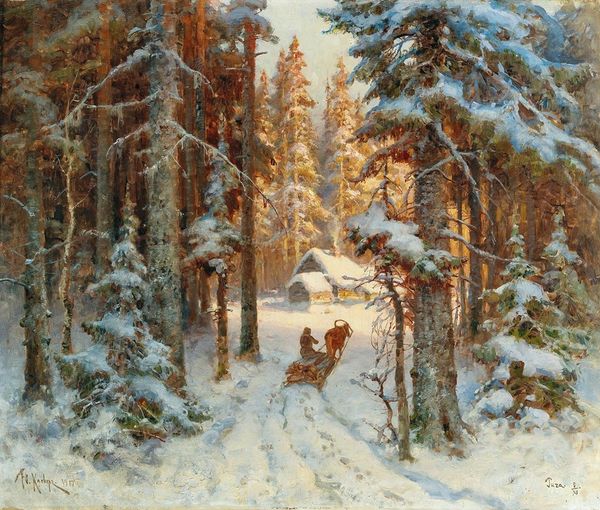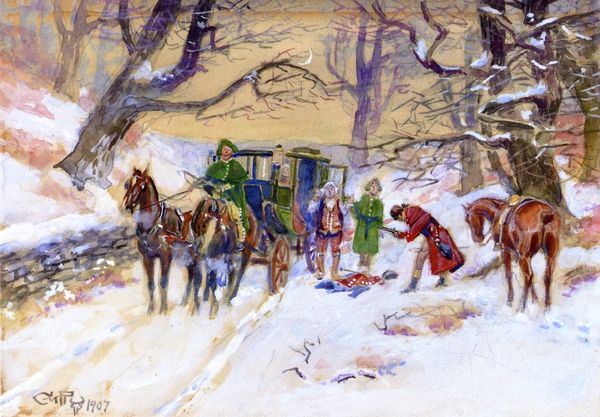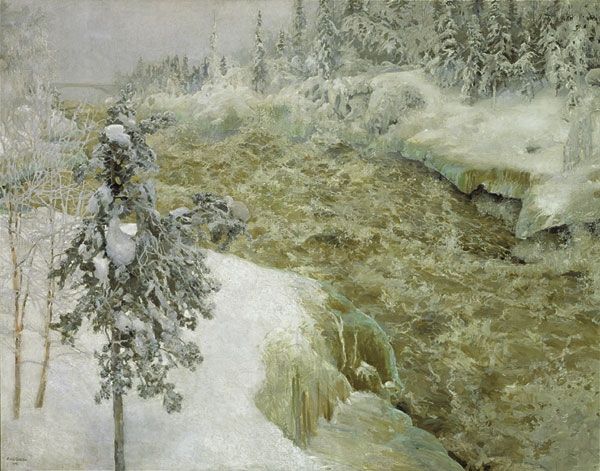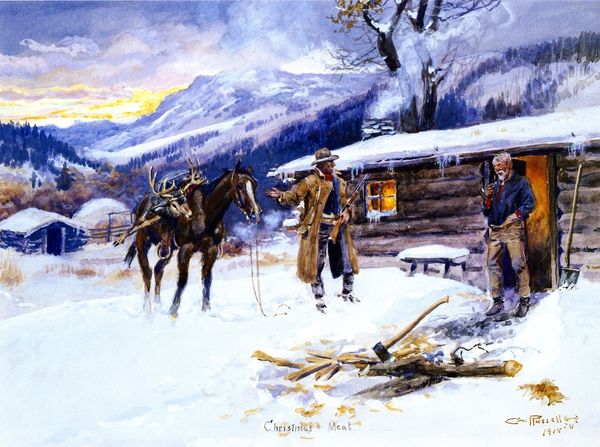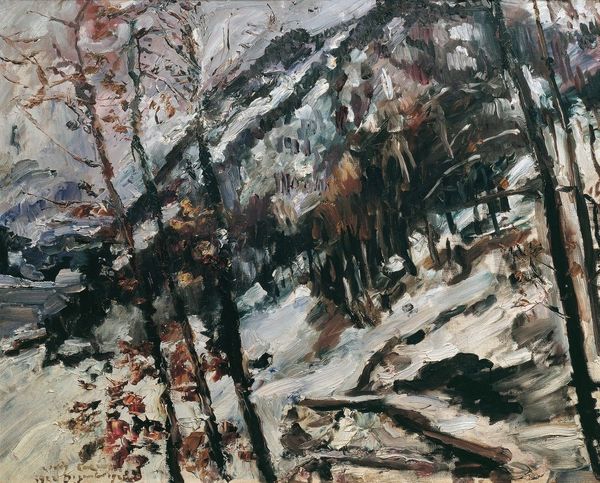
Copyright: Public domain
Editor: Charles M. Russell's "An Unscheduled Stop," painted in 1926 using watercolor and gouache, strikes me as both beautiful and a little ominous. The soft colors and the wintery landscape are gorgeous, but the riders and that distant wagon train seem to be in a potentially dangerous situation. What do you see in this piece? Curator: It’s fascinating how Russell uses a familiar image of the West to explore deeper themes. What initially strikes you as "ominous" might stem from the symbols deeply embedded within the image, even unconsciously grasped. Consider the moon, a recurring symbol representing transition, the feminine, and cyclical change – do those themes seem to resonate with the image? Editor: I didn't immediately think of the moon like that, but you're right, that makes sense. Also the contrast between the figures close to the viewer, and then the wagons traveling along a snowy pass in the distance, which seem exposed to danger… Curator: Exactly. The landscape itself, with the rugged mountains in the background, becomes more than just scenery; it symbolizes challenge, endurance, and perhaps even isolation. Consider also the specific stance of the horses: Are they hesitant, perhaps even sensing something amiss? This kind of regionalist genre-painting invites the viewer to delve into the layered narratives held within familiar settings and symbols. Editor: It's amazing how much depth is hidden beneath the surface of what I thought was just a picture of cowboys in the snow. This piece really does make you think about more than just what's on the canvas. Curator: Precisely. Russell masterfully utilizes familiar imagery to connect to shared cultural memory. Every element, even something as simple as the moon or the direction of the path, carries layers of historical and cultural meaning, revealing how our understanding of the West has been shaped and passed down through art.
Comments
No comments
Be the first to comment and join the conversation on the ultimate creative platform.
